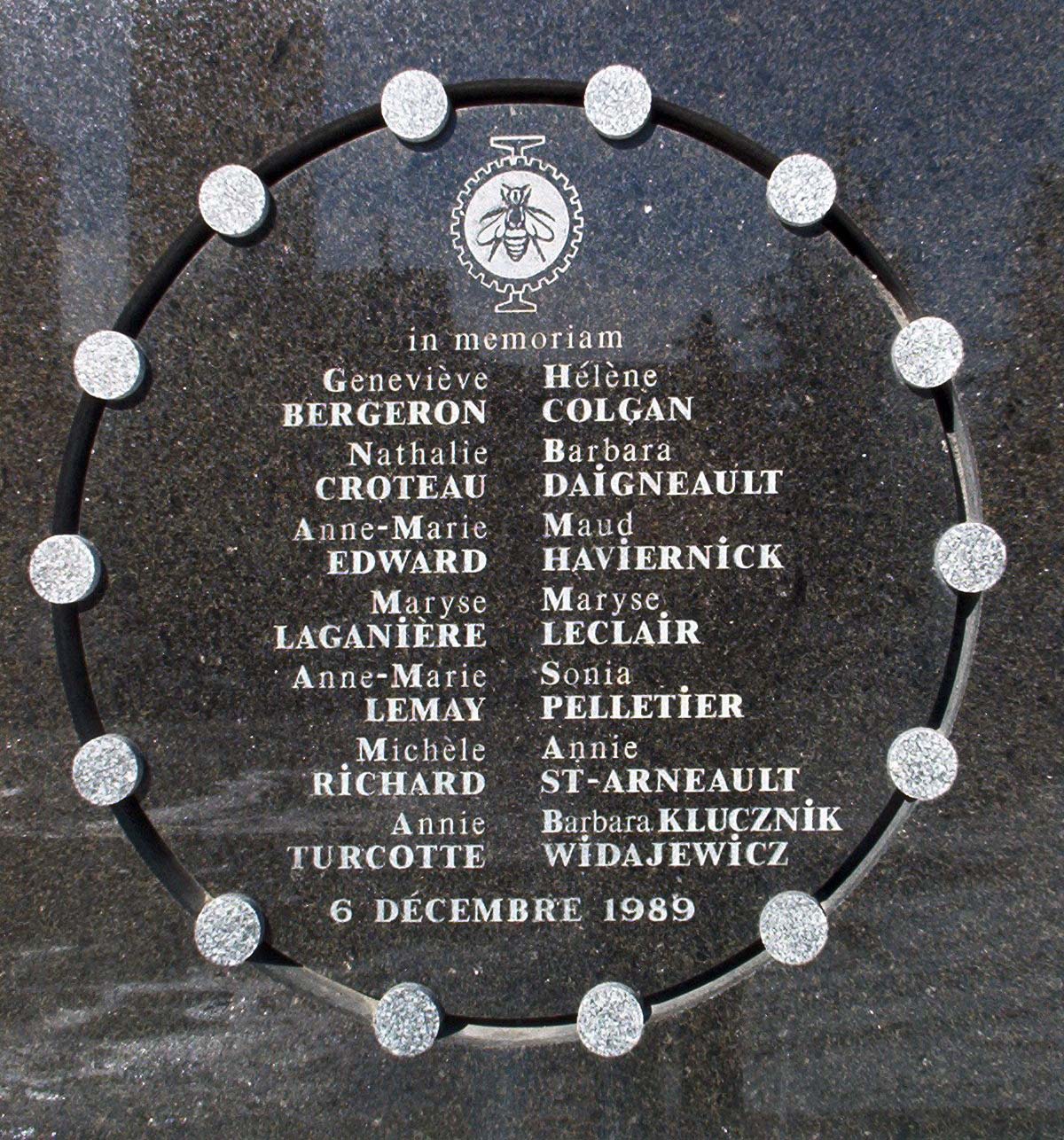Shelley Page writing for the Ottawa Citizen: How I sanitized the feminist outrage over the Montreal massacre.
It’s a fascinating piece about how the rage of women at what the massacre represented in the fight for equal opportunity and professional respect was sidelined and gatekept from being part of the national and international discussion of the massacre at the time.
When I review the stories I wrote, I almost never used the word feminist; I never profiled the achievements of one of the slain engineering students or the obstacles she’d toppled. I never interviewed a single woman who was angry, only those who were merely sad. Why? No one told me what not to write, but I just knew, in the way I knew not to seem strident in a workplace where I’d already learned how to laugh at sexist jokes and to wait until a certain boss had gone for the day before ripping down Penthouse centrefolds taped on the wall near his desk.
This particular paragraph rang especially true as an illustration of how microaggressions in the workplace (and generally) operate to perpetuate the status quo via everyday silencing tactics: the targets of the microaggressions are groomed into growing that much-lauded “thicker skin” so they can be held up as a team-player (or else so discouraged that they leave the team), groomed into schooling their expressions to be neutral or approving rather than angry or disgusted, and most especially groomed into self-censoring their first observations so that what they end up saying/writing is less likely to “rock the boat” of cultural complacency. Any target who doesn’t “toe the line” of complying with the expected pattern of “just our little jokes” at their expense ends up isolated and eventually scapegoated, discredited, and sidelined so that the status quo remains in place. This is how social norms are usually, almost subconsciously, reinforced every day in a multitude of small ways. This everyday gatekeeping ends up providing cover for the people whose worldviews are so extremely threatened by social change that they eventually resort to violent terrorism to protect their status quo.
Marc Lépine targeted women who were trespassing on what he saw as male territory because he believed that those women had, simply by existing as STEM students, failed to be deferential enough to the masculine ideal, and this enraged him so much that he decided that anyone he perceived to be a feminist at l’École Polytechnique deserved to die. He had a list of activist feminist targets but when he realised he couldn’t reach them he settled for shooting women who simply had the misfortune to be in range. One of the targeted feminists on Lépine’s list notes the silence about the political basis of Lépine’s crime at the time:
“He was our first terrorist and nobody was treating it that way,” says Pelletier. “Those (engineering) students dared to take the place of men. They represented our future and he was targeting our future — how we imagined ourselves to be.”
Lépine was labelled as simply a “mad killer”. Although the list of his (all-female) targets was released to the press within days, his suicide letter which clearly stated that his intent was to kill feminists was not published until a year later, and then only because it was leaked rather than officially released.
Pelletier calls the mass denial of the fact the crime was against feminists “the untold story of the whole thing.” She and Simard still shake their heads. Imagine, they say, if he’d separated blacks from whites, one ethnic group from another. He would still be considered mentally unbalanced, but it would have been seen as a hate crime, a racist crime.
It would have been so obvious. But women? Somehow they didn’t matter. Both women call it “deeply disturbing . . . depressing.”
[…]
Pelletier remembers an editorial in Quebec City’s Le Soleil that argued “the truth was that the crime had nothing to do with women.” She says late Quebec actor and intellectual Pierre Bourgault was isolated in his argument that “this was the first sexist crime in history.”
Anger smoulders in her voice.
Pelletier describes the message as: “Cool it, girls . . . No one wanted to hear this stuff and, for me, that was such an aha moment.”
Those who feel safe with their position within an oppressive culture never want to hear “this stuff” from the oppressed.
We have seen it over and over again, not just regarding womanhood but on all the intersecting axes of oppression (notably the too many feminists who don’t want to hear “this stuff” from those oppressed on other axes). We are seeing it right now in response to African-American outrage about police shootings of unarmed people of colour. It’s one thing to refuse to be silenced but we need to also make space for listening when it comes to naming and countering oppression in all its manifestations, including the microagressions that are too easy for non-targets to overlook, because they feed the culture of silence about larger injustices.
In Memoriam – 1989-12-06

Mtl dec6 plaque” by Bobanny – self-made (derivative of Image:6-dec-Plaque.jpg, tweaked in photoshop). Licensed under Public domain via Wikimedia Commons.
Geneviève Bergeron (born 1968), civil engineering student
Hélène Colgan (born 1966), mechanical engineering student.
Nathalie Croteau (born 1966), mechanical engineering student.
Barbara Daigneault (born 1967) mechanical engineering student.
Anne-Marie Edward (born 1968), chemical engineering student.
Maud Haviernick (born 1960), materials engineering student.
Maryse Laganière (born 1964), budget clerk in the École Polytechnique’s finance department.
Maryse Leclair (born 1966), materials engineering student.
Anne-Marie Lemay (born 1967), mechanical engineering student.
Sonia Pelletier (born 1961), mechanical engineering student.
Michèle Richard (born 1968), materials engineering student.
Annie St-Arneault (born 1966), mechanical engineering student.
Annie Turcotte (born 1969), materials engineering student.
Barbara Klucznik-Widajewicz (born 1958), nursing student.